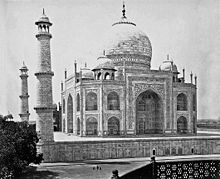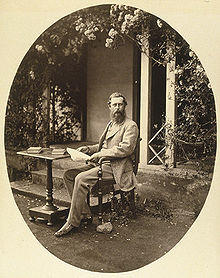Samuel Bourne


Samuel Bourne (born October 30, 1834 in Mucklestone , Staffordshire , † April 24, 1912 in Nottingham ) was an English photographer .
He is one of the pioneers of travel photography of the 19th century and is considered the most important photographer in India.
life and work
From 1853, Samuel Bourne first devoted himself to landscape photography . He took his pictures in England , Scotland and Wales and they soon found recognition in the Nottingham Photographic Society.
He gave up his job as a bank clerk and began his trip to India a year later, in 1863 .
From Calcutta he made several trips to Kashmir to document the Himalayan mountains . During his seven-year stay in India, he took numerous landscape shots, as well as photographs of Indian buildings and people.
Almost 2000 of his works were offered for sale by Bourne & Shepherd , of which he was a co-founder. The business flourished because it was the only way for people in Europe at the time to get an idea of distant countries and cultures.
Despite his business success, Samuel Bourne returned to England in 1870. He went into business for himself as a textile manufacturer and gave up photography around 1900.
Travel photography late 19th century
Samuel Bourne 's travel reports show how arduous and costly travel and documentary photography was in the mid - 19th century. In addition to the heavy camera and stand, the extremely sensitive glass plates, a lot of chemicals and a darkroom tent had to be brought from home. For the recordings in the Himalayan region, around sixty porters were on the way to transport equipment and sufficient food. Sometimes it took several climbs before all the equipment was in place for a successful photograph.
See also
Web links
| personal data | |
|---|---|
| SURNAME | Bourne, Samuel |
| BRIEF DESCRIPTION | English photographer |
| DATE OF BIRTH | October 30, 1834 |
| PLACE OF BIRTH | Mucklestone , Staffordshire |
| DATE OF DEATH | April 24, 1912 |
| Place of death | Nottingham |
